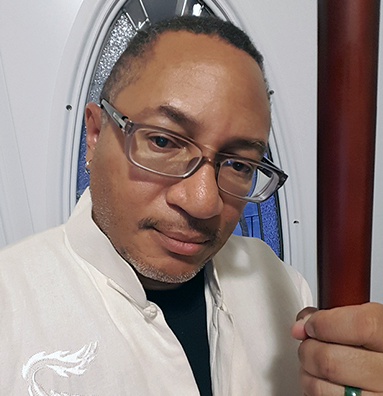Information Technology Services (ITS)
IT@UofT People: Gerald Lindo
Published on: August 29, 2019
The backbone of any successful team is its hard-working people. The University of Toronto’s Information Technology Services (ITS) division is privileged to employ outstanding individuals with diverse talents that extend beyond work-related education and skills.
In this segment, entitled IT@UofT People, we will get to know our IT@UofT team across the tri-campus community and find out more about their hidden or not-so-hidden talents and/or pursuits outside of work.
————————

Gerald Lindo, Enterprise project manager, Enterprise Applications and Solutions Integration (EASI).
Name: Gerald Lindo
Department: Enterprise Applications and Solutions Integration (EASI)
Title: Enterprise project manager
How long have you worked at University of Toronto (U of T)?
I’ve worked as enterprise project manager, part of the Enterprise Applications & Solutions Integration (EASI) team, for three years.
What is your secret or not-so-secret talent(s) and hobbies outside of work?
I studied tai chi for about 25 years and used to teach it to various students in my martial arts group at Spiritwind Internal Arts. Just recently, I’ve begun to teach it again, here, at U of T, for the annual TechKnowFile conference. Tai chi involves exercises using the fundamental movements of Chinese martial arts, designed to train the mind, body and spirit and to cultivate smooth, natural flows of the body’s own life energy.
How and why did you get involved in this pursuit?
I had studied other martial arts when I was younger, but found that it was hard to keep up with their demanding practice schedules. For example, I have a black belt in Kendo (the Japanese art of fencing), which I began practicing in 1987 at the Japanese Canadian Cultural Centre.
In 2002, I was introduced to a tai chi teacher through a mutual friend and decided to take her classes. Tai chi is easy to begin and, once started, I found that I could practice it anywhere. This allowed me to build up muscle memory, which really benefited my lessons and impacted my life outside of class.
In the end, I found that tai chi took away a lot of stress for me, whereas Kendo created stress!
Do you have any professional training in this field?
I was introduced to tai chi, qi gong and baguazhang through the Spiritwind Internal Arts organization and trained in Yang Style tai chi forms (open hand, staff and sword) directly under Sifu Hannah Jacobs and Spiritwind’s founder: Sifu Chik Qadir Mason.
Can you describe qi gong and baguazhang?
Qi gong is another form of Chinese exercise focusing on breathing and movement. It is similar to tai chi in that it emphasizes the natural flow of life energy for its practitioners.
Baguazhang is martial arts style employing a form of circular walking, closely related to tai chi.
Who/what are your inspirations?
Locally, I was inspired by several of Spiritwind’s Canadian students that I met when I originally started learning from the school. They include:
- Dylan Kirk, who became a Master himself, has carried on Spirit Wind’s teachings. These days, he focuses on training traditional healing, martial and meditation practices.
- Hanna Jacobs, who introduced me to the world of Tai Chi, was the very best Sifu ever. Whenever I try to share anything, whoever I share it with, I try to emulate her wonderful grace, style and power.
- Wil McLean, who started the company Pursuit OCR in Toronto, which is basically an adult playground. Wil was always the highest energy student in the room, showing us how to enjoy life and keeping us going when all we wanted to do was to quit early.
Philosophically, I’ve always been inspired by the works of spiritual authors, like Jack Kornfield, Thich Nhat Hanh and Osho.
Do you have any future plans related to your tai chi practice/teaching?
I am currently scouting the U of T St. George campus for a suitable location to teach tai chi, free of charge, to students, faculty and employees.

